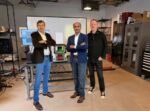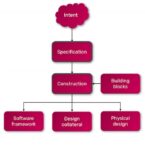You are currently viewing SemiWiki as a guest which gives you limited access to the site. To view blog comments and experience other SemiWiki features you must be a registered member. Registration is fast, simple, and absolutely free so please,
join our community today!
Sanjive Agarwala is co-founder and CEO of EuQlid, a quantum technology company, developing novel 3D imaging tools to support the design and manufacturing of semiconductors and batteries.
Prior to EuQlid, Sanjive served as Corporate Vice President and General Manager of the IP Group at Cadence Design Systems. His business included… Read More
Using chiplets is an emerging trend well-covered at #62DAC and they even had a dedicated Chiplet Pavilion, so I checked out the presentation from Dan Slocombe, Design Engineering Architect in the Compute Solutions Group at Cadence. In a short 20 minutes Dan managed to cover a lot of ground, so this blog will summarize the key points.… Read More
There is a built-in challenge for edge AI intended for long time-in-service markets. Automotive applications are the obvious example, while aerospace and perhaps medical usage may impose similar demands. Support for the advanced AI methods we now expect – transformers, physical and agentic AI – is not feasible without dedicated… Read More
Dan is joined by Marc Evans, director of business development and technology at Andes. Marc has over twenty years of experience in the use of CPU, DSP, and Specialized IP in SoCs from his prior positions at Lattice Semiconductor, Ceva, and Tensilica. During his early career, Marc was a processor architect, making significant contributions… Read More
Even for experienced technologists some technologies can seem almost indistinguishable from magic. One example is the bird’s eye camera view available on your car’s infotainment screen. This view appears to be taken from a camera hovering tens of feet above your car. As an aid to parallel parking, it’s a brilliant invention; … Read More
While sensor-based control and activation systems have been around for several decades, the development and integration of sensors into control systems have significantly evolved over time. Early sensor-based control systems utilized basic sensing elements like switches, potentiometers and pressure sensors and were … Read More
Automotive engineers are familiar with the ISO 26262 standard, as it defines a process for developing functional safety in electronic systems, where human safety is preserved as all of the electronic components are operating correctly and reliably. Automotive electronics have now grown to cover dozens of applications, and… Read More
It’s popular to use DSP chips for vision processing in diverse applications like ADAS, security cameras and AR. Tensilica has been designing DSP chips and IP since 1997, and their technology was successful enough that Cadence acquired Tensilica back in 2013. At the IP-SoC Silicon Valley 2022 event in April I had the pleasure… Read More
The Linley spring conference this year had a significant focus on AI at the edge, with all that implies. Low power/energy is a key consideration, though increasing performance demands for some applications are making this more challenging. David Bell (Product Marketing at Tensilica, Cadence) presented the Tensilica NNE110… Read More
Earbuds are one of the fastest growing market segments, which is creating the need for audio DSPs with higher performance and a smaller energy footprint. More than just being wireless speakers – earbuds, and wearables for that matter, have become a sophisticated extension of the user interface of phones and laptops, etc.… Read More










